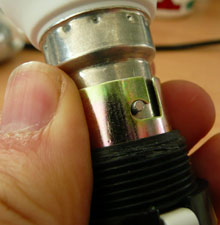Hello,
I am looking for a way to attach a cap to the end of a tube and looking for some suggestions. The tube is Appx. 3" OD tube with .06" wall. The cap also has an OD of 3". Threading the cap on with internal threads into the tube is not an option. I'm looking for some more unique ways to attach the cap. Also, the cap cannot have any fasteners exposed. The cap should be removable so adhesives might be out as well. A simple twist-lock or maybe bayonet style connector would be neat, but looking for some off shelf components to make this happen. Maybe some type of push-lock connection?
Thanks in advance.
I am looking for a way to attach a cap to the end of a tube and looking for some suggestions. The tube is Appx. 3" OD tube with .06" wall. The cap also has an OD of 3". Threading the cap on with internal threads into the tube is not an option. I'm looking for some more unique ways to attach the cap. Also, the cap cannot have any fasteners exposed. The cap should be removable so adhesives might be out as well. A simple twist-lock or maybe bayonet style connector would be neat, but looking for some off shelf components to make this happen. Maybe some type of push-lock connection?
Thanks in advance.




![[wink] [wink] [wink]](/data/assets/smilies/wink.gif)